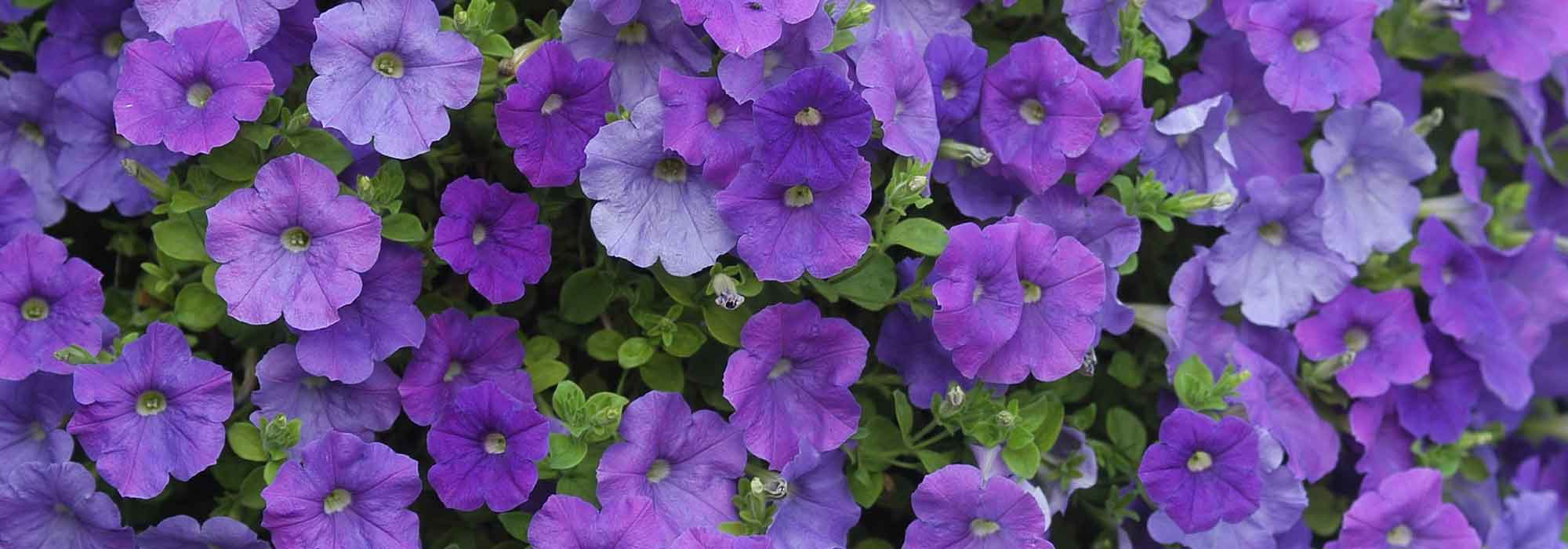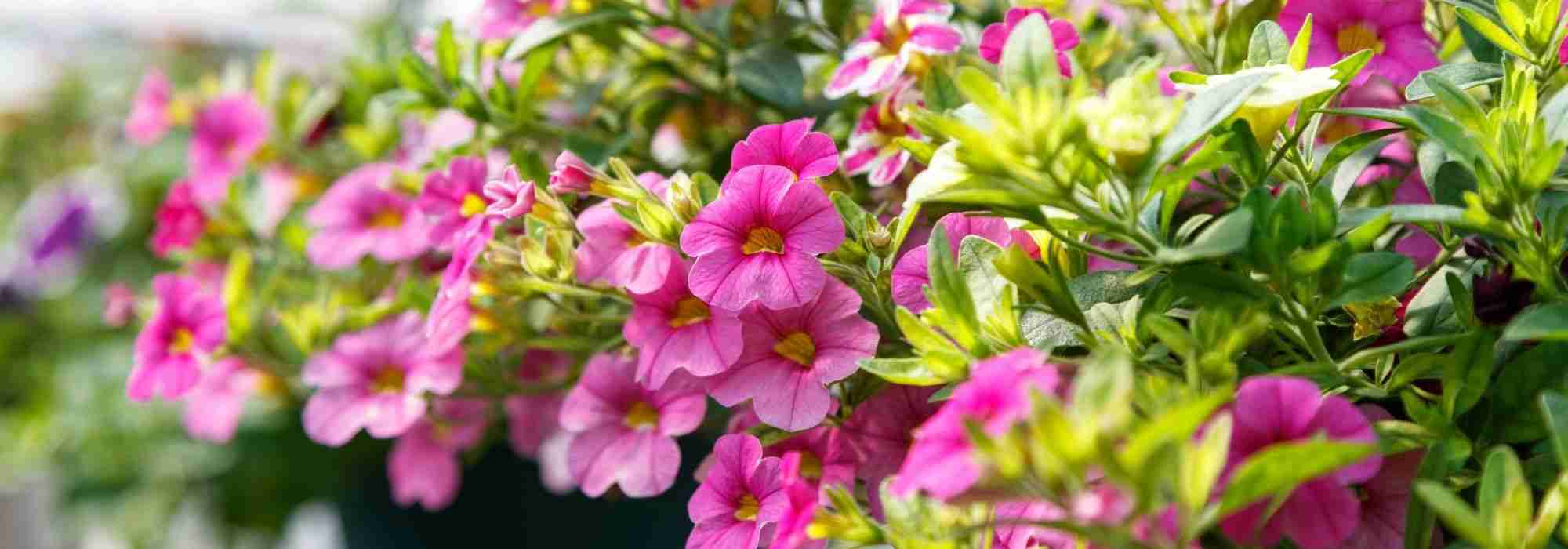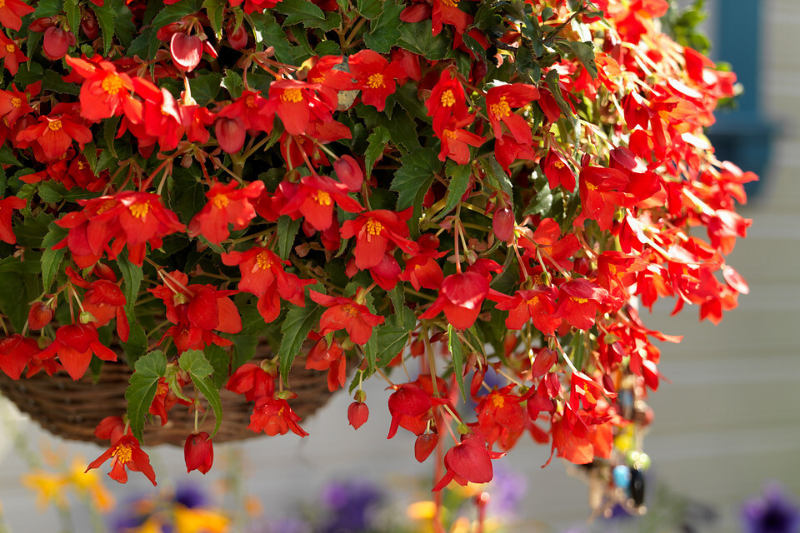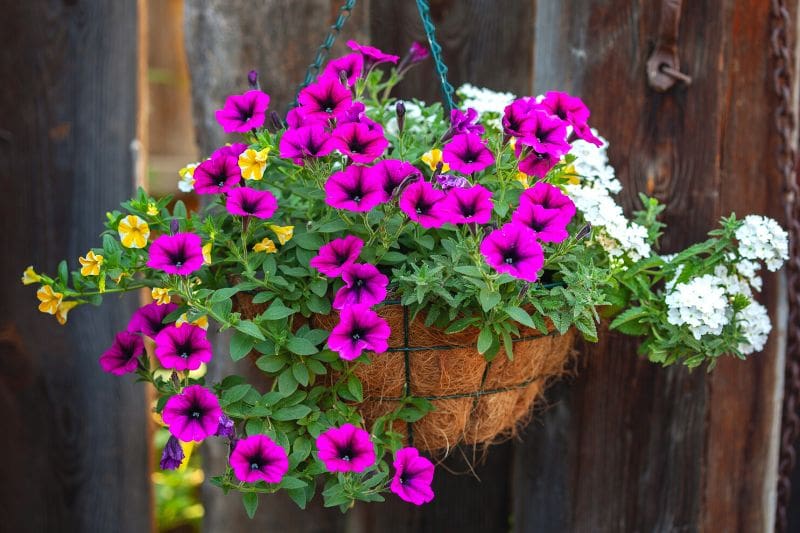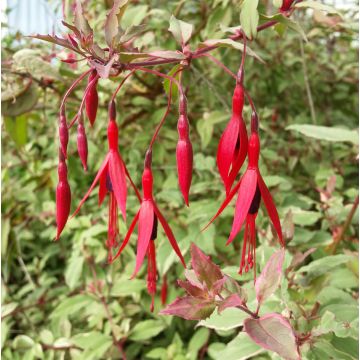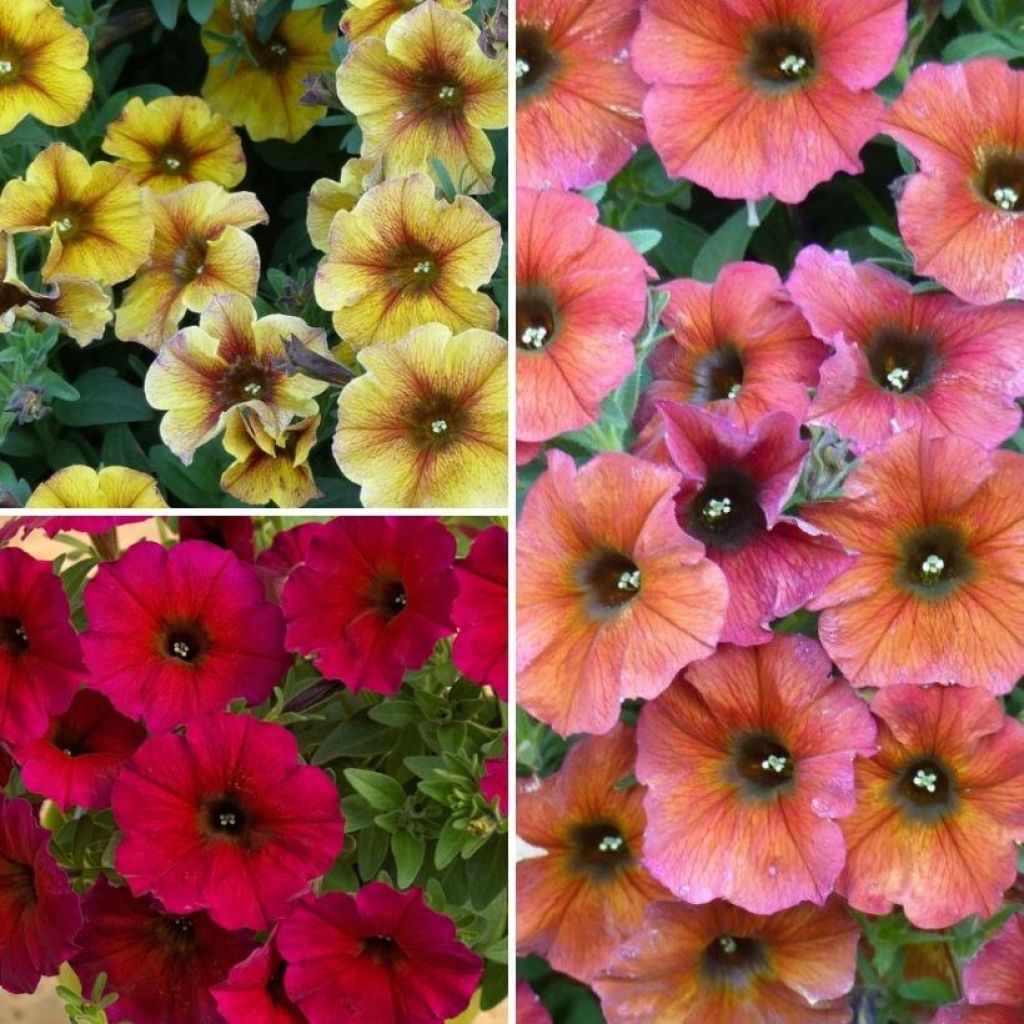

Petchoa Sunset Orange Cinnamom & Bordeaux - Hybrid Petunia


Petchoa Sunset Orange Cinnamom & Bordeaux - Hybrid Petunia
Petchoa Sunset Orange Cinnamom & Bordeaux - Hybrid Petunia
x Petchoa hybrida Sunset Orange Cinnamom, Bordeaux
Although carefully planted, the young plants struggled. I watered, fertilized, and placed them in the sun, but the petunias never grew taller than 10cm (4in). Disappointing.
ils n'ont jamais démarré, 15/08/2023
Special offer!
Receive a €20 voucher for any order over €90 (excluding delivery costs, credit notes, and plastic-free options)!
1- Add your favorite plants to your cart.
2- Once you have reached €90, confirm your order (you can even choose the delivery date!).
3- As soon as your order is shipped, you will receive an email containing your voucher code, valid for 3 months (90 days).
Your voucher is unique and can only be used once, for any order with a minimum value of €20, excluding delivery costs.
Can be combined with other current offers, non-divisible and non-refundable.
Home or relay delivery (depending on size and destination)
Schedule delivery date,
and select date in basket
This plant carries a 6 months recovery warranty
More information
We guarantee the quality of our plants for a full growing cycle, and will replace at our expense any plant that fails to recover under normal climatic and planting conditions.
Would this plant suit my garden?
Set up your Plantfit profile →
Collection items (3 plants)
Description
We offer you this lovely collection of 3 very recent hybrid petunias, called x Petchoa hybrida, with brightly colored single flowers in yellow, pink, and salmon, to flower your balconies and terraces until the first frosts. It brings together 3 varieties from the 'BeautiCal' series, which combine the large flowers with the magnificent colors of petunias and the weather resistance of Calibrachoa. All these plants have a compact habit and offer early and long-lasting flowering. They resist rain, heat, and diseases well and require little maintenance.
This collection is sold in sets of 3 plug plants, one of each variety, as follows:
1 x 'Bordeaux': its flowers are a velvet red with a dark throat.
1 x 'Cinnamon': a mix of pink and orange tones with salmon, its flowers are discreetly veined with brown and centered on a more amber heart.
1 x 'Sunset Orange': its flowers are a warm orange subtly marbled with golden yellow.
The x Petchoa hybrida are recent horticultural hybrids resulting from cross-breeding between petunias and Calibrachoa, often called Million Bells. They are tender perennials often grown as annuals. Very similar to each other, these two types of plants differ in some morphological characteristics: Calibrachoa flowers are smaller, their growth habit is shrub-like or herbaceous with woody stems, their development is less significant, and they tolerate drought better. The hybrids that make up this group all belong to the Solanaceae family (like tomatoes) and probably descend from an Argentine species called Petunia integrifolia. The improved 'BeautiCal' series stands out for its compact habit, large-sized flowers, and good resistance to diseases, weather, and heat.
'BeautiCal' petunias are still relatively uncommon in France. The plants quickly form dense clumps, slightly wider than they are tall, reaching 25 to 30 cm (10 to 12in) in height and 40 to 50 cm (16 to 20in) in diameter. The flexible stems are covered along their entire length with lanceolate, evergreen, velvety, non-sticky leaves of a dark green color that beautifully enhances its flowering. The single funnel-shaped flowers bloom from May-June until the frosts. They measure 5 to 6 cm (2in) in diameter and constantly renew themselves at the axil of the leaves, covering the faded flowers that fall off on their own without remaining attached to the foliage. Unlike petunias, these Petchoas do not need to be pruned during the season, making them extremely rewarding annual plants, easy to grow, accessible to all gardeners, even beginners.
This delightful collection of BeautiCal petunias allows you to effortlessly create a beautiful summer decoration for your terrace or balcony. All three are perfect in hanging baskets, flowerpots, or containers, but their heat tolerance and excellent flower performance in the rain also allow them to be used in open ground, where they form very pretty borders. They can be planted alone or mixed with 2 or 3 varieties of complementary calibrachoas or petunias in troughs, flowerpots, or balcony planters on the terrace, balcony, or patio. They are also good plants for conservatories. Their association with verbenas, purple-leaved ipomoeas, and nemesis is remarkable. The choice is vast and allows for imagination and the tastes of every gardener, even inexperienced ones.
Note: Attention, our plug plants are professional products reserved for experienced gardeners: upon receipt, repot and store them under cover (conservatory, greenhouse, cold frame...) at a temperature above 14°C (57.2°F) for a few weeks before installing them outside once the risk of frost has definitively passed.
Flowering
Foliage
Plant habit
Botanical data
x Petchoa
hybrida
Sunset Orange Cinnamom, Bordeaux
Solanaceae
Cultivar or hybrid
Planting and care
You can plant your x Petchoa hybrida BeautiCal in open ground or in a pot. If you want to plant them in open ground, in soil enriched with compost, wait until the last heavy frosts have passed. In the meantime, you can pre-cultivate them in a pot in a warm and bright place to accelerate their growth. They will flower from May-June to October. Plant them in a sunny location, sheltered from the wind. They need a light and humus-rich soil, but above all well-draining, and they are sensitive to stagnant water. Do not water them too much at the beginning of the growing season as they can be sensitive to excess humidity. They are quite water-efficient, but will need regular watering during hot summer weather. Very floriferous and fast-growing, they are hungry plants. We recommend feeding them with a liquid fertilizer for surfinias once or twice a week during the growing season. Although not obligatory, you can remove faded flowers and dry leaves as they appear to maintain a beautiful appearance and prolong the flowering period.
Planting period
Intended location
Care
Planting & care advice
-
, onOrder confirmed
Reply from on Promesse de fleurs
Similar products
Haven't found what you were looking for?
Hardiness is the lowest winter temperature a plant can endure without suffering serious damage or even dying. However, hardiness is affected by location (a sheltered area, such as a patio), protection (winter cover) and soil type (hardiness is improved by well-drained soil).

Photo Sharing Terms & Conditions
In order to encourage gardeners to interact and share their experiences, Promesse de fleurs offers various media enabling content to be uploaded onto its Site - in particular via the ‘Photo sharing’ module.
The User agrees to refrain from:
- Posting any content that is illegal, prejudicial, insulting, racist, inciteful to hatred, revisionist, contrary to public decency, that infringes on privacy or on the privacy rights of third parties, in particular the publicity rights of persons and goods, intellectual property rights, or the right to privacy.
- Submitting content on behalf of a third party;
- Impersonate the identity of a third party and/or publish any personal information about a third party;
In general, the User undertakes to refrain from any unethical behaviour.
All Content (in particular text, comments, files, images, photos, videos, creative works, etc.), which may be subject to property or intellectual property rights, image or other private rights, shall remain the property of the User, subject to the limited rights granted by the terms of the licence granted by Promesse de fleurs as stated below. Users are at liberty to publish or not to publish such Content on the Site, notably via the ‘Photo Sharing’ facility, and accept that this Content shall be made public and freely accessible, notably on the Internet.
Users further acknowledge, undertake to have ,and guarantee that they hold all necessary rights and permissions to publish such material on the Site, in particular with regard to the legislation in force pertaining to any privacy, property, intellectual property, image, or contractual rights, or rights of any other nature. By publishing such Content on the Site, Users acknowledge accepting full liability as publishers of the Content within the meaning of the law, and grant Promesse de fleurs, free of charge, an inclusive, worldwide licence for the said Content for the entire duration of its publication, including all reproduction, representation, up/downloading, displaying, performing, transmission, and storage rights.
Users also grant permission for their name to be linked to the Content and accept that this link may not always be made available.
By engaging in posting material, Users consent to their Content becoming automatically accessible on the Internet, in particular on other sites and/or blogs and/or web pages of the Promesse de fleurs site, including in particular social pages and the Promesse de fleurs catalogue.
Users may secure the removal of entrusted content free of charge by issuing a simple request via our contact form.
The flowering period indicated on our website applies to countries and regions located in USDA zone 8 (France, the United Kingdom, Ireland, the Netherlands, etc.)
It will vary according to where you live:
- In zones 9 to 10 (Italy, Spain, Greece, etc.), flowering will occur about 2 to 4 weeks earlier.
- In zones 6 to 7 (Germany, Poland, Slovenia, and lower mountainous regions), flowering will be delayed by 2 to 3 weeks.
- In zone 5 (Central Europe, Scandinavia), blooming will be delayed by 3 to 5 weeks.
In temperate climates, pruning of spring-flowering shrubs (forsythia, spireas, etc.) should be done just after flowering.
Pruning of summer-flowering shrubs (Indian Lilac, Perovskia, etc.) can be done in winter or spring.
In cold regions as well as with frost-sensitive plants, avoid pruning too early when severe frosts may still occur.
The planting period indicated on our website applies to countries and regions located in USDA zone 8 (France, United Kingdom, Ireland, Netherlands).
It will vary according to where you live:
- In Mediterranean zones (Marseille, Madrid, Milan, etc.), autumn and winter are the best planting periods.
- In continental zones (Strasbourg, Munich, Vienna, etc.), delay planting by 2 to 3 weeks in spring and bring it forward by 2 to 4 weeks in autumn.
- In mountainous regions (the Alps, Pyrenees, Carpathians, etc.), it is best to plant in late spring (May-June) or late summer (August-September).
The harvesting period indicated on our website applies to countries and regions in USDA zone 8 (France, England, Ireland, the Netherlands).
In colder areas (Scandinavia, Poland, Austria...) fruit and vegetable harvests are likely to be delayed by 3-4 weeks.
In warmer areas (Italy, Spain, Greece, etc.), harvesting will probably take place earlier, depending on weather conditions.
The sowing periods indicated on our website apply to countries and regions within USDA Zone 8 (France, UK, Ireland, Netherlands).
In colder areas (Scandinavia, Poland, Austria...), delay any outdoor sowing by 3-4 weeks, or sow under glass.
In warmer climes (Italy, Spain, Greece, etc.), bring outdoor sowing forward by a few weeks.

































